- europages
- >
- COMPANIES - SUPPLIERS - SERVICE PROVIDERS
- >
- heat recovery
Results for
Heat recovery - Import export
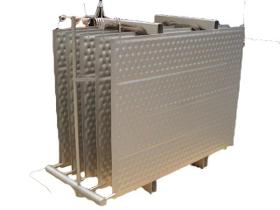
ANTHERMO GMBH
Germany
Temperation of fluids Pillow plates are used everywhere where liquids must be temperated. In dependence of application the liquids can be cooled or heated. Cause of this wide range of applications pillow plates are used in the process industry, in the cooling industry and in a lot of other industries. Pillow plates are also know as heat exchanger plates, evaporator plates, cooling plates /sheets and thermo plates / sheets. Pillow plates as air-/water-heat exchanger Additionally to the temperation of liquids pillow plates are also used as air-/liquid heat exchangers. In case of polluted or wasted air and if there are high demands for cleaning, more and more pillow plates are used as air-/water-heat exchanger. The large exchange surface and the good possibilities for cleaning are important features for this type of heat exchanger.
Request for a quote
ANTHERMO GMBH
Germany
Air-water / air-air heat exchanger as smooth tube heat exchanger up to 1,000 ° C Smooth tube heat exchanger as an air / water heat exchanger In the case of air-water heat exchangers (also called gas-water heat exchangers), a temperature exchange takes place between a gas (usually air) and a liquid. As a rule, the liquid medium flows inside the pipes, while the gaseous medium flows around the pipes outside the pipes. Smooth tube heat exchangers can cover various areas of application: heating, cooling and condensing as well as heat recovery. Smooth tube heat exchanger as air-to-air heat exchanger Smooth tube heat exchangers are also often used as air-to-air heat exchangers. In this application, a gas (e.g. exhaust air or exhaust gases) flows inside the pipes and a gas (e.g. fresh air) outside the pipes around the pipes.
Request for a quote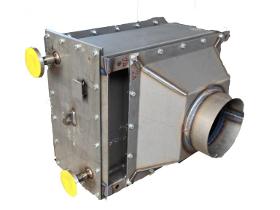
ANTHERMO GMBH
Germany
Heat recovery with the help of heat exchangers In industry, waste heat occurs at many points in the production process, which is often released into the environment without being used. In many cases, energy is even used to cool the waste heat flows from production so that they can be released into the environment. Heat exchangers (also called heat exchangers) are used for heat recovery so that the waste heat generated in the production process can be used again in the company. Gaseous or liquid media Waste heat can be in the form of gaseous media (e.g. warm exhaust air, steam, exhaust gases, etc.) or in the form of liquid media (e.g. hot water or other liquids). With the help of heat exchangers, the waste heat can be recovered from both gaseous and liquid media and then made available to the production process at a suitable point as energy in gaseous or liquid media. This process is known as energy recovery or also as heat recovery.
Request for a quote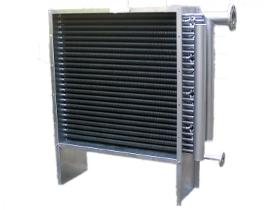
ANTHERMO GMBH
Germany
Air heat exchangers as finned tube heat exchangers Heat transfer between a gaseous media and a liquid Finned tube heat exchangers are often called air/water heat exchangers or gas/water heat exchangers. Heat transfer between a gas (for ex. air) and a liquid (for ex. water) takes place in the air-/water heat exchangers. To improve the thermal output transfer from the gas to the liquid, fins made of well heat transferring materials are put on the tubes. Very often air-/water heat exchangers are used as exhaust heat exchanger to gain the energy out of warm or hot exhaust fumes. Finned tube heat exchangers can also be used as air heater, air cooler or condenser.
Request for a quote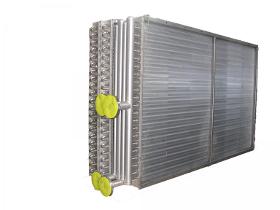
ANTHERMO GMBH
Germany
Temperature exchange between a gas and a liquid In the case of air-water heat exchangers (also called gas-water heat exchangers), there is a temperature exchange between a gas (usually air) and a liquid. Finned heat exchangers can cover various areas of application: - heating and evaporating, - cooling and condensing as well as heat recovery. In this context, lamellar heat exchangers are also called air heaters or air coolers. Air-water heat exchangers are often also used as exhaust gas heat exchangers or flue gas heat exchangers in order to recover the energy from warm or hot exhaust gases. Lamella packs for a large exchange area In order to achieve the largest possible exchange surface between the air and the medium (liquid) within the heat exchanger, lamellas or lamella packs are attached to the pipe system.
Request for a quoteDo you sell or make similar products?
Sign up to europages and have your products listed

TROTEC GMBH
Germany
TTR 250 Ex stainless steel desiccant dehumidifiers For use in Ex-proof zones ... The TTR 250 Ex complies with the ATEX Products Directive 2014/34/EU and was specially developed for dehumidification in hazardous areas (non-conductive dusts). Ex protection: ATEX zone 22 (Ex II 3D Ex c T240 °C) With the TTR 250 Ex you can benefit from a professional desiccant dehumidifier originally produced by Trotec which has been developed and manufactured according to the highest of quality standards in Germany. The standard operating hours counter of the TTR 250 Ex is optionally also available as a dual counter for the additional MID-compliant registration of the power consumption. A few practical benefits: * - Robust high-quality dehumidifier “made in Germany” * - Corrosion-resistant stainless steel housing * - Integrated heat recovery * - Self-regulating PTC heating * - Ampere meter to control the operating condition * - Operating hours counter
Request for a quote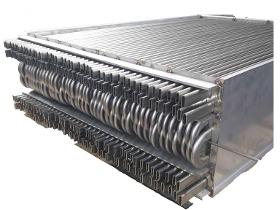
ANTHERMO GMBH
Germany
Temperature control of gaseous and liquid media Flat tube heat exchangers are generally used as air / air or air / liquid heat exchangers. Flat tube heat exchangers are used where the (exhaust) air is polluted and the installation space is limited. In heat recovery in particular, there are numerous applications for flat tube heat exchangers as so-called exhaust gas / exhaust air heat exchangers. Little installation space and less pressure loss While the rows of tubes in smooth tube heat exchangers consist of round tubes, the rows of tubes in flat tube heat exchangers have a special profile (see illustration). This special tube profile offers advantages over the round profile in certain applications. Flat tube heat exchangers require less installation space than smooth tube heat exchangers with the same exchange area and are therefore also lighter.
Request for a quote
ANTHERMO GMBH
Germany
Customized air-air heat exchanger for the industry (up to 1.000°C) Hot outgoing air and cold incoming air Very often hot exhaust gas gets out in the environment without any use. On the other hand cold incoming air must be lead into the production process and shall be warmed. This occurs for example very often within drying technology. In this case air-air heat exchangers can be used very efficient in heat recovery. As result you have great potential to save energy expenses. Three types of air-air heat exchangers The Anthermo GmbH delivers three types of different air-air-heat exchangers: cross-flow heat exchanger straight-tube heat exchanger flat-tube heat exchanger The technical figures (for ex. amount of air, temperature, pressure, waste of air) can be different for the air-air heat exchanger. Also the operating conditions and the environment conditions can vary from application to application.
Request for a quote
TECHNOTRANS SOLUTIONS GMBH
Germany
A complete centralised cooling plant, including the required peripherals, can be set up in the absolute shortest possible time at the subsequent place of installation and is immediately ready for use by means of prefabrication and installation in a container. This way, the otherwise high investments for an operating building, the costs for installation and start-up of the plant are reduced. Container cooling plants almost have no limitations in terms of their capacity and variety of possible combinations. They are supplemented by peripheral systems such as water treatment and water preparation systems or compressed air compressors. A series of different cooling systems and the combined systems composed of these units are primarily available: Chiller Heat pump systems for heat recovery Cooling tower combined with a KU system as a closed, clean cooling circuit Air heaters for direct recovery of heat hermeticool-units hermeticool hybrid-units
Request for a quote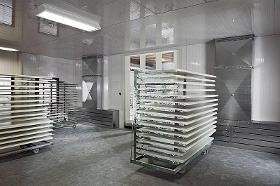
RIPPERT ANLAGENTECHNIK GMBH & CO. KG
Germany
For forced drying. Drying rooms Drying rooms offer the possibility to make the drying process faster and more comprehensible through forced drying. Depending on the paint systems, the temperature and humidity of the air can be adapted to suit the special requirements. In the high-gloss field in particular, special filters ensure the demanded degree of purity. Depending on the size and the specific task, Rippert also offers its drying rooms with heat recovery.
Request for a quote
RIPPERT ANLAGENTECHNIK GMBH & CO. KG
Germany
The correct air budget is an often underestimated quality factor in surface treatment technology. Where heating, cooling, movement and filtration is concerned, a great deal of energy can be saved with innovative solutions. Supply air systems replace extracted air quantities and ensure: Supply and exhaust air systems Supply air systems ensure draught-free and clean ventilation of work rooms, while high-efficiency exhaust air systems with fans and filter systems are responsible for the necessary air exhaust. This takes place with the lowest possible use of energy and with the longest possible intervals between maintenance and cleaning operations. We also offer intelligent air solutions for dryers, pre-treatment plants and cooling zones. Heat recovery A further important point is heat recovery. We can achieve up to a maximum of 80% heat recovery with the most diverse systems. Cross-current, rotary heat exchanger, heating pipe or circulatory systems – they all have their own advantages and efficiencies, which we integrate according to requirements during the planning of the plant.
Request for a quote
RIPPERT ANLAGENTECHNIK GMBH & CO. KG
Germany
The correct air budget is an often underestimated quality factor in surface treatment technology. Where heating, cooling, movement and filtration is concerned, a great deal of energy can be saved with innovative solutions. Supply air systems replace extracted air quantities and ensure: Supply and exhaust air systems Supply air systems ensure draught-free and clean ventilation of work rooms, while high-efficiency exhaust air systems with fans and filter systems are responsible for the necessary air exhaust. This takes place with the lowest possible use of energy and with the longest possible intervals between maintenance and cleaning operations. We also offer intelligent air solutions for dryers, pretreatment plants and cooling zones. Heat recovery A further important point is heat recovery. We can achieve up to a maximum of 80% heat recovery with the most diverse systems. Cross-current, rotary heat exchanger, heating pipe or circulatory systems – they all have their own advantages and efficiencies, which we integrate according to requirements during the planning of the plant.
Request for a quote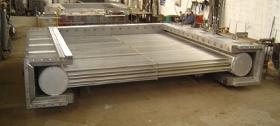
OGE GROUP
Germany
Shell and Tube Heat Exchangers | Air Coolers, Air Heaters, Pressure Vessels | Gas cooling in pneumatic conveying systems | Air cooling in industrial refrigeration | Air drying in textile machines | Air heating & cooling in HVAC systems | Coolers for A.C and D.C motors | Coolers for power transformers | Diesel and gas engines water cooling | Air preheaters for boiler plants | Economizers for steam, oil and hot water generation | Hydrocarbon condenser | Industrial process water cooling | Inter and after coolers | Oil cooling in lubrication system | Solvent recovery by condensation | Steam condenser
Request for a quote
VENJAKOB MASCHINENBAU GMBH & CO KG
Germany
The thermal incinerator (TI for short) is a system which converts gas or vaporous pollutants found in exhaust gas into non-polluting compounds by way of direct combustion. This machine is characterized by: The thermal incinerator (TI for short) is a proven and robust plant for the conversion of organic pollutants (VOCs, etc.). Today it is used especially for processes which involve high exposure to condensation or dust, or for specialized solutions requiring greater heat recovery potential. An example of this would be exhaust gases containing plasticizers or siloxane. The modular design of the combustion chamber and heat exchanger especially is conducive to servicing and cleaning compared to other designs. The polluted air is forced by means of a centrifugal fan into the tube bundle heat exchanger where it circulates around the tube bundle in a cross-current fashion. The heat exchanger can be designed for an efficiency of up to 70%. The pollutants are converted in the combustion chamber at a temperature of around 760 °C. After extensive heat transfer to the raw noxious gas, the cooled clean gas leaves the plant, where it can be supplied to various heat recovery systems (or a combination of several). The auxiliary burners can be operated with natural gas or propane or light heating oil.
Request for a quoteResults for
Heat recovery - Import exportNumber of results
15 ProductsCompany type